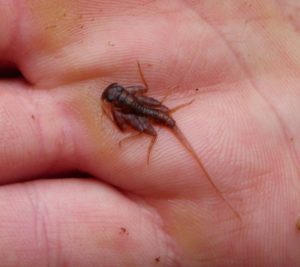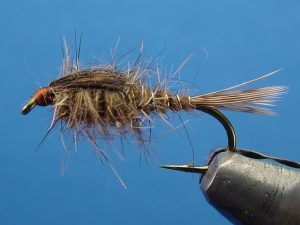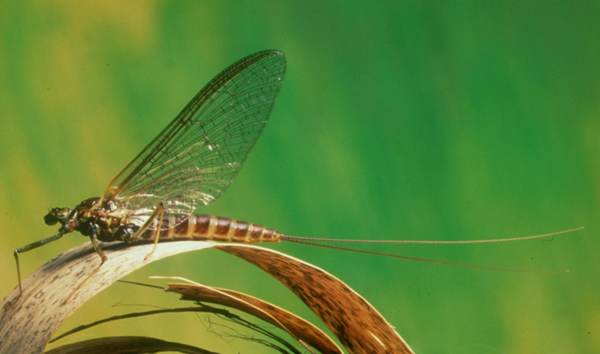 So, I’m writing about March Browns not because they are necessarily of great significance to the Smoky Mountain fly fisherman, but mainly because they’re just really cool bugs! Like many aquatic insects in the Smokies, this mayfly does not usually hatch abundantly enough to really get the trout keyed in on them, but it is worth keeping a few in your fly box. In other words, you probably don’t need fifteen different March Brown patterns in subtly different colors. Having a few of a basic pattern should do the trick.
So, I’m writing about March Browns not because they are necessarily of great significance to the Smoky Mountain fly fisherman, but mainly because they’re just really cool bugs! Like many aquatic insects in the Smokies, this mayfly does not usually hatch abundantly enough to really get the trout keyed in on them, but it is worth keeping a few in your fly box. In other words, you probably don’t need fifteen different March Brown patterns in subtly different colors. Having a few of a basic pattern should do the trick.
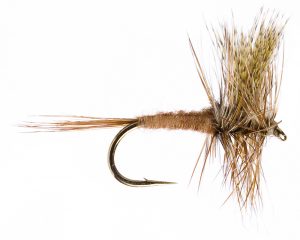
March Browns are big, usually a #12 or #10 hook size, and they tend to be the first mayfly of the year with any color. Most of your early spring mayflies are some version of grey, but March Browns usually have a light, reddish brown body with handsomely mottled wings of brown, tan and even yellow hues. Contrary to what their name might imply, these mayflies don’t hatch in March. Rather, they tend to show up, at least in the Smokies, around the third week of April and hang around for the first half of May.
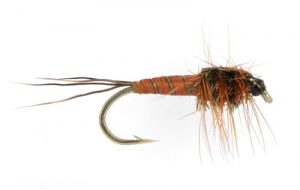
The nymphs are probably the most important stage for Smoky Mountain fishermen. While they have flat clingy bodies with muscular legs, making them very strong crawlers, when they lose their footing, they are terrible swimmers and easy pickins for a waiting trout. The nymphs tend to inhabit moderate to fast riffles and vary in color from tan to reddish brown to dark brown. A Hare’s Ear Nymph or Pheasant Tail Nymph are good generic imitations. I’ve also included one of my favorite patterns designed to specifically imitate a March Brown nymph.
Nymphing these patterns should be fairly effective all day but particularly early in the morning. Expect to see the adults hatching from late morning to early afternoon with a spinner fall near dusk.
Learn more about Smoky Mountain hatches and flies in my hatch guide.
March Brown Dry
Hook: #12 – #10 TMC 100 or equivalent
Thread: Brown 8/0
Tail: Brown hackle fibers
Body: Reddish tan dubbing (many companies sell a color called March Brown)
Wing: Wood Duck
Hackle: Brown and Grizzly
March Brown Nymph
Hook: #12 TMC 3761 or equivalent
Thread: Brown 8/0
Tail: Moose fibers
Abdomen: Rusty red floss
Rib: Stripped peacock stem
Wincase: Lacquered turkey
Thorax: Peacock herl
Legs: Brown hackle

 Even with all the newfangled fly patterns and fly tying materials available today, I usually find myself sticking more with the old staples, or at least pretty similar variations. And I stick with them for one main reason: They work! Created by fly tying guru, Dave Whitlock in the 1960’s, this fly definitely falls under the “old staple” category.
Even with all the newfangled fly patterns and fly tying materials available today, I usually find myself sticking more with the old staples, or at least pretty similar variations. And I stick with them for one main reason: They work! Created by fly tying guru, Dave Whitlock in the 1960’s, this fly definitely falls under the “old staple” category.